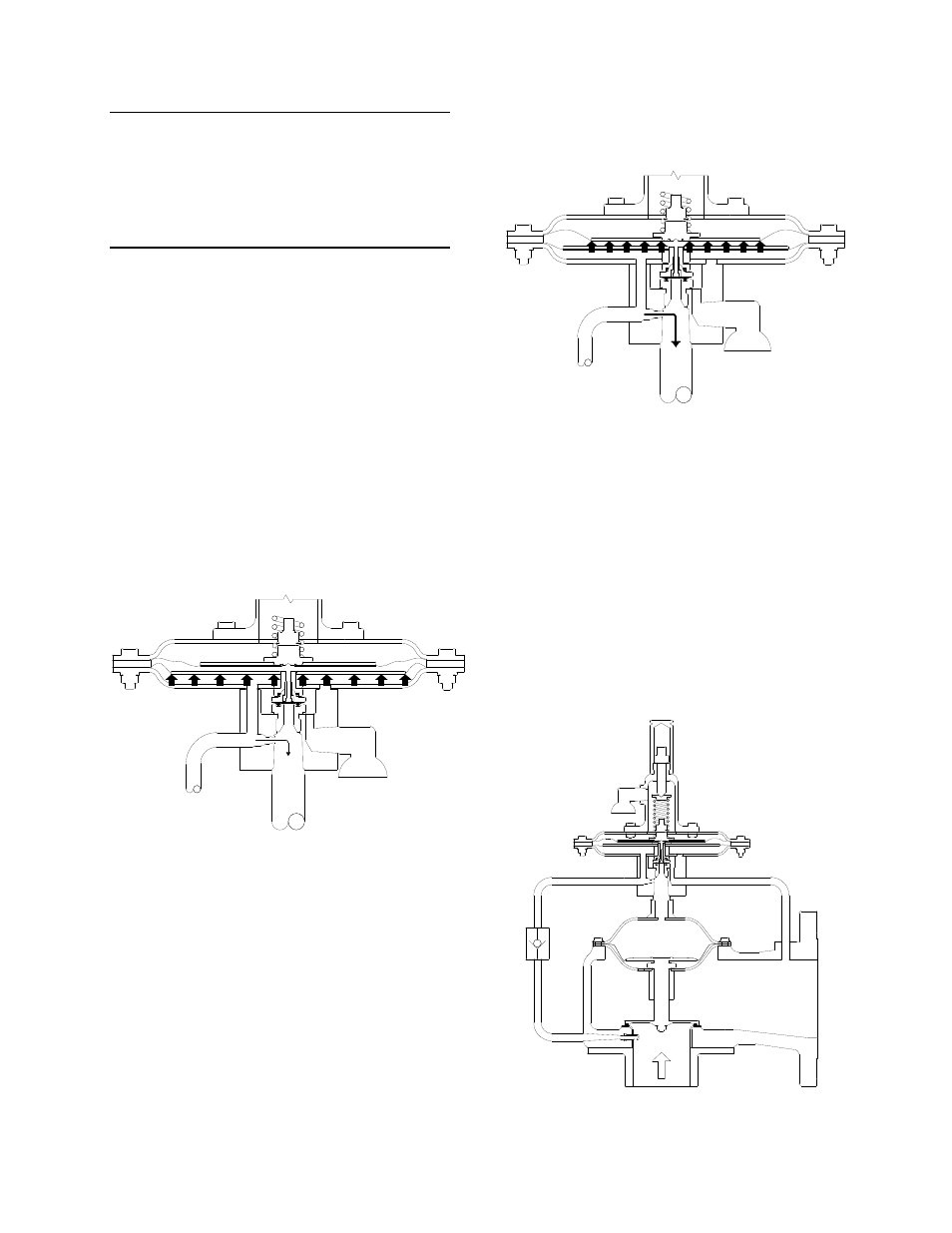Groth 1401E User Manual
Page 7

6
WARNING
Increase the orifice setting only enough to provide
the desired modulating action. Excessive orifice size
will prevent the pressure relief valve from opening
fully at the specified overpressure.
Because of the high flow rate through the orifice, the
pressure under the lower diaphragm decreases
slightly and the pressure between diaphragms
exhausts slowly so the pilot valve opens partially.
The actuator exhausts slowly through the partially
open pilot valve and the relief valve opens slowly.
The pilot valve will open incrementally and the
actuator will be exhausted sufficiently to satisfy flow
requirements without excessive overpressure. The
relief valve will maintain the system at approximately
10% overpressure until the source of the
overpressure ceases.
Fig. 6 Reseat - Snap Action
When the tank pressure decreases to set pressure with
the pilot valve set for maximum blowdown
(minimum orifice) space between diaphragms is still
evacuated. Set pressure is acting on a larger
effective diameter and the valve remains open. The
pilot valve begins to close at a lower pressure.
Because of the low flow of tank vapors, the pressure
between diaphragms increases slowly so the pilot
valve closes slowly, and the relief valve actuator fills
slowly. The relief valve closes at a pressure less than
set pressure which is relative to the orifice
adjustment.
Fig. 7 Reseat - Modulating
When the tank pressure decreases to set pressure with
the pilot valve set for minimum blowdown (increased
orifice) the pilot valve begins to close. Because of
the high flow of tank vapors, the pressure between
diaphragms increases rapidly, the pilot valve closes
rapidly, and the relief valve actuator fills rapidly.
The relief valve closes at a pressure very near the set
pressure, achieving "zero blowdown".
OPTIONS
The following options are frequently utilized to
reduce vapor emissions, improve serviceability or
expand the capabilities of the pressure relief valve:
Fig. 8 Vent Piped to Discharge Header
